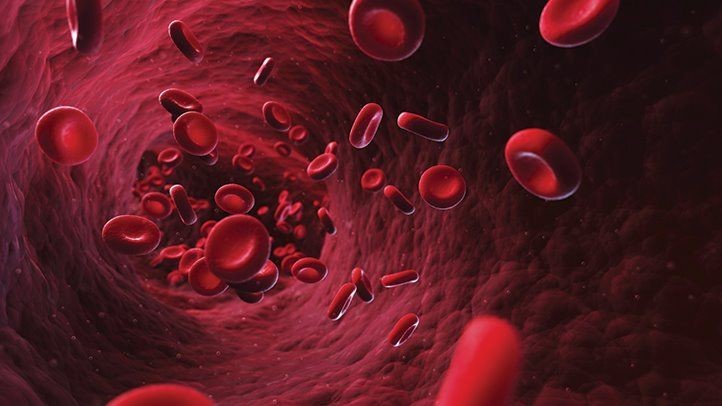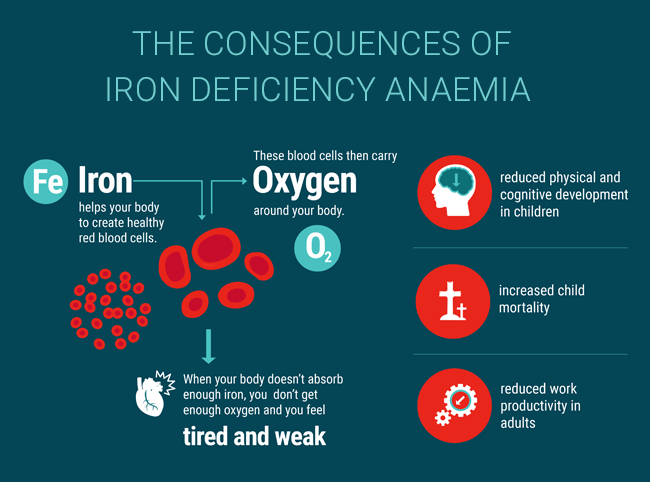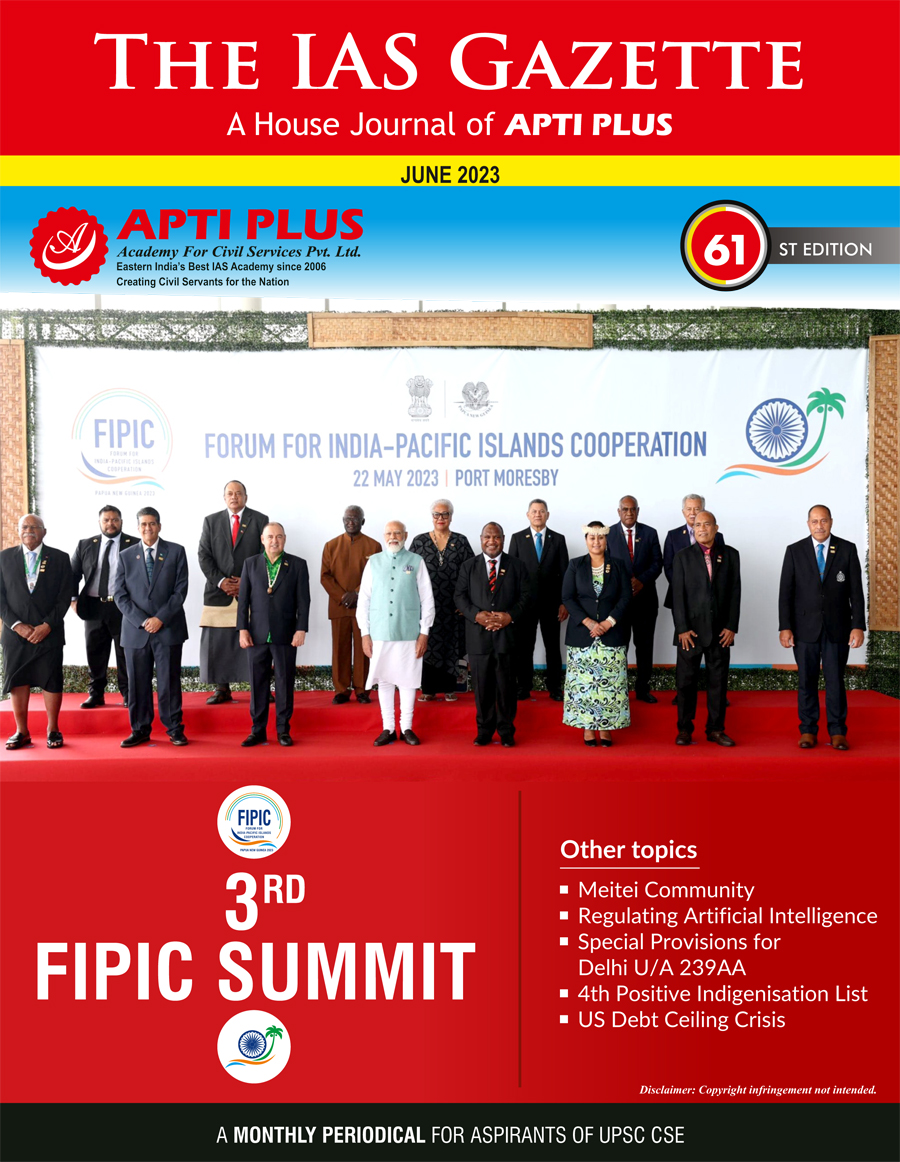
Disclaimer: Copyright infringement not intended.
Context
- The National Family Health Survey (NFHS) is dropping Anaemia from the survey to be launched on July 1.
- According to the Health Ministry, the assessment of Anaemia in India is being shifted to the new Diet and Biomarkers Survey in India (DABS-I).
Anaemia
- According to the World Health Organization (WHO), anaemia is a condition in which the number of red blood cells or the haemoglobin concentration within them is lower than normal.
- Haemoglobin is needed to carry oxygen and if there are too few red blood cells or not enough haemoglobin, there will be a decreased capacity of the blood to carry oxygen to the body’s tissues, resulting in symptoms such as fatigue, weakness, dizziness and shortness of breath among others.
- Cause: Anaemia, according to WHO, may be caused by several factors. The most common nutritional cause of anaemia is iron deficiency although deficiencies in folate, vitamins B12 and A are also important causes.

Why is anaemia being dropped from NFHS?
- The Comprehensive National Nutrition Survey (CNNS) 2016-18, in which blood samples were collected from almost 50,000 children and adolescents aged 1-19 years, showed a lower prevalence of anaemia than the NFHS, which was attributed to the difference in the sample collection method.
- CNNS used blood samples drawn from the vein or venous samples while the NFHS uses samples from pricks on fingertips (capillary samples).
- An international study conducted in Bangladesh and Malawi found that tests done in the laboratory using venous samples showed a lower prevalence of anaemia (or higher haemoglobin level) than point-of-care (POC) tests using capillary samples. Since NFHS uses capillary samples tested with a POC instrument, HemoCue, several experts argued that this could be a reason for the survey showing a high prevalence of anaemia.
NFHS estimate of anaemia prevalence
- In the last survey, NFHS-5 (2019-21), the prevalence of anaemia showed a huge jump among almost all sections with the most dramatic increase (from 59% to 67%) among children aged 6 months to five years.
- Several experts said that the prevalence was ‘inexplicably’ high and blamed it on the method of using capillary samples and said that the high estimates were being used by many, including international organisations, to push fortification of food.
Government’s reaction
- In 2021, the government decided to distribute rice fortified with iron via government schemes.
- Bu this came in for much criticism from public health experts, who pointed out that there was insufficient evidence of any benefit and sufficient evidence of the harm that could be caused by an overload of iron.
- Meanwhile, many public health experts have pointed out that the increase in the overall prevalence of anaemia was no surprise as several surveys have also shown that people are eating less and eating poorer quality of food due to substantial increases in food prices and stagnation of incomes.

Arguments in favour of including/retaining anaemia in NFHS
Importance of comparing Data sets
- From a public health point of view, it is important to be able to compare data sets from across the country at different intervals such as comparing the data from NFHS-3 to NFHS-4 or 5.
- This helps to understand how the condition has changed over the years.
Capillary Method is used in 90 countries
- The Demographic Health Survey, supported by the United States Agency for International Development (USAID), of which NFHS was also a part, is conducted in 90 countries and the capillary blood method is used for all the international samples.
- So we know if we are performing better or worse than other countries.
Venous blood method requires skilled lab technicians
- Venous blood method requires skilled lab technicians and cannot be done in the field. So removing capillary blood estimates from large-scale surveys offers no other alternative, so basically we will not have any large surveys on anemia in India.
Screening tools are always less reliable
- Screening tools are always less reliable than diagnostic.
- If someone is positive or negative on a screening tool they may still require diagnostic tests to confirm. So, expecting an anaemia screening tool such as capillary testing to have high sensitivity and specificity is a problem.
Inclusion of Anaemia in new Survey- Diet and Biomarkers Survey in India (DABS-I)
- Though anaemia is being dropped from the NFHS, it will be covered in a new survey that was launched in 2022.
- The new survey called the Diet and Biomarkers Survey in India (DABS-I) is to be conducted by the Indian Council of Medical Research (ICMR) and the National Institute of Nutrition (NIN) and funded by ICMR.
- It is meant to map the diet, nutrition and health status, and provide a correct estimate of anaemia among urban and rural populations using venous samples.
- The study is expected to provide nutrient composition data on cooked and uncooked foods from all regions and states of the country by collecting food samples from households.
- It is expected to reflect not only intake but also nutrient metabolism, bioavailability, and effects of diet on physiological and disease processes.
- According to some experts, DABS is envisaged as a periodic survey, but there has been no firm commitment from the government on this. A lot could depend on the success or failure of the first survey.
Importance of Data on Anaemia
- Data on anaemia remains an important indicator of public health since anaemia is related to morbidity and mortality in the population groups usually considered to be the most vulnerable — pregnant women and children under five.
- A prevalence study on anaemia is useful to monitor the progress of reproductive health. Also, iron deficiency anaemia reduces the work capacity of individuals and entire populations, with serious consequences for the economy and national development.
Steps taken by the Government to eradicate Anaemia
Anaemia Mukt Bharat (AMB)
- In 2018, the Government of India launched the Anaemia Mukt Bharat (AMB) strategy with the target to reduce anaemia in women, children and adolescents in life cycle approach. The interventions for pregnant women under Anaemia Mukt Bharat (AMB) including Rajasthan, Madhya Pradesh, Haryana, Jharkhand and Bihar for tackling anaemia cases are as follows:
- Prophylactic Iron and Folic Acid Supplementation including Adolescents girls (10-19 years).
- Intensified year-round Behaviour Change Communication (BCC).
Campaign including ensuring delayed cord clamping
- Testing of anaemia using digital methods and point-of-care treatment.
- Addressing non-nutritional causes of anaemia in endemic pockets with special focus on malaria, hemoglobinopathies and fluorosis.
- Management of severe anaemia in pregnant women undertaken by administration of IV Iron Sucrose/Blood transfusion.
- Providing incentives to the ANM for the identification and follow-up of pregnant women with severe anaemia in high-priority districts (HPDs).
- Training and orientation of Medical Officers and front-line workers on newer Maternal Health and Anaemia Mukt Bharat
- Field-level awareness by ASHAs through community mobilization activities and IEC and BCC activities focused on anaemia in pregnant women.
|
PRACTICE QUESTION
Q. Data on anaemia remains an important indicator of public health since anaemia is related to morbidity and mortality in the population groups usually considered to be the most vulnerable. What are the implications of dropping Anaemia from the National Family Health Survey on India's Anaemia Policy? Evaluate.
|

https://www.thehindu.com/sci-tech/health/explained-why-is-india-rethinking-its-anaemia-policy/article66928573.ece





